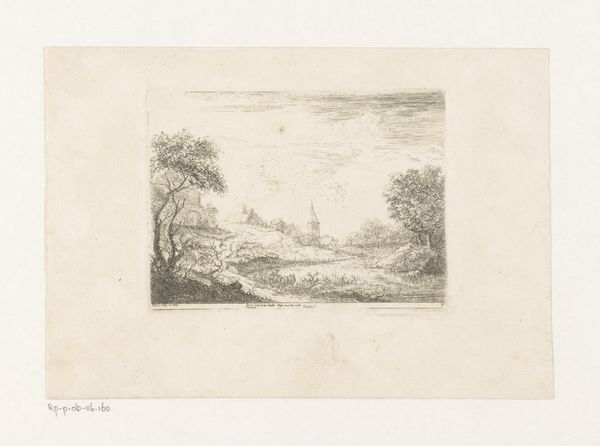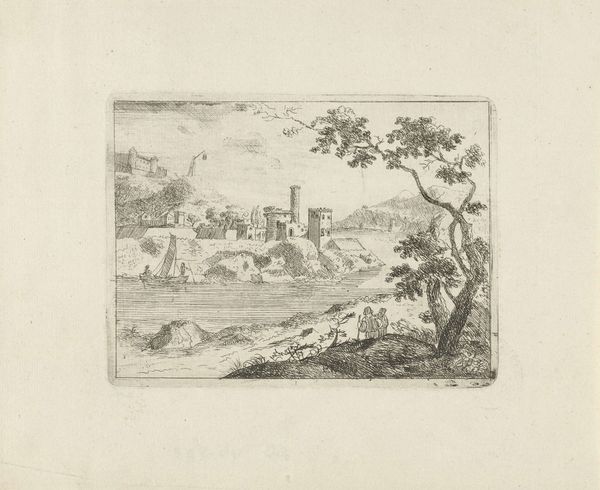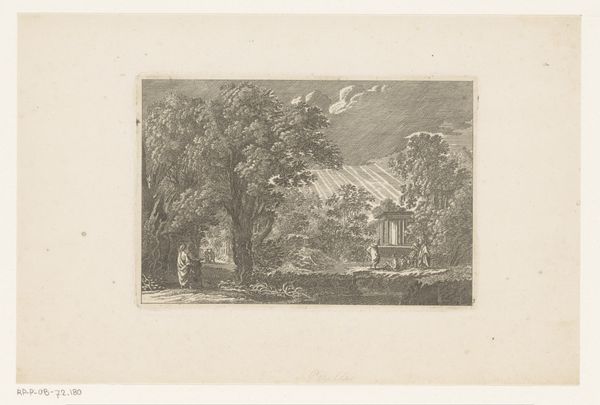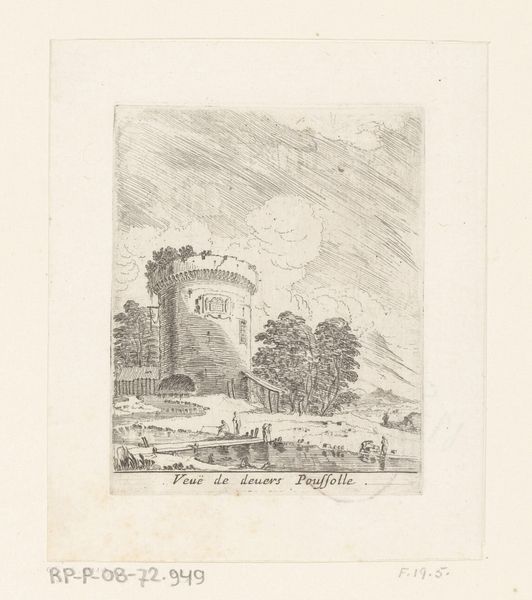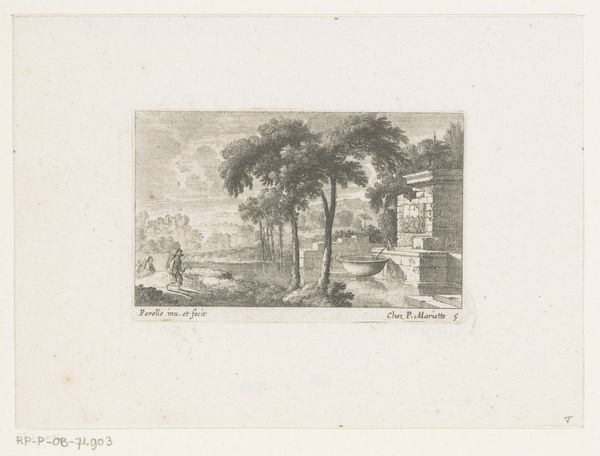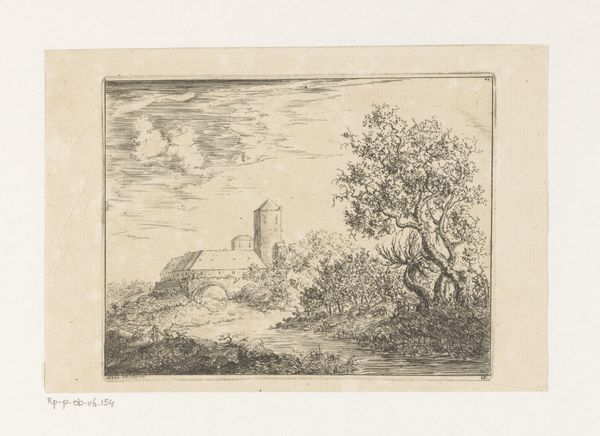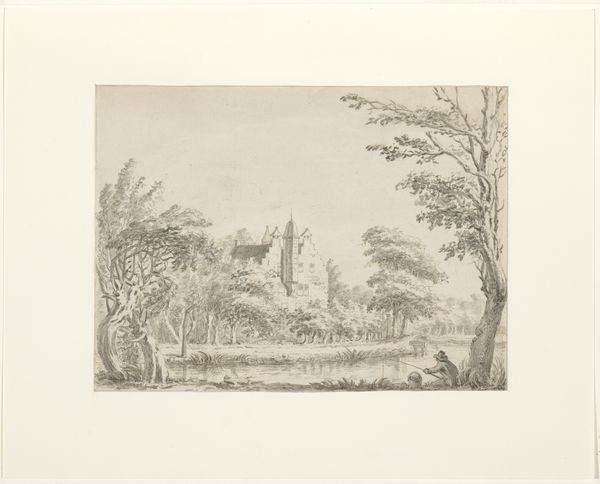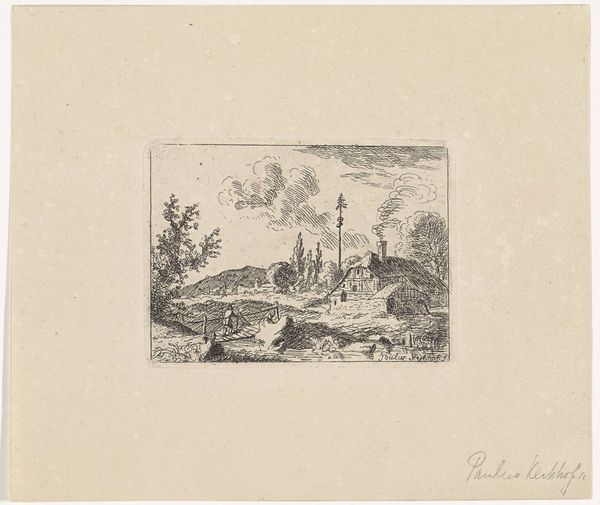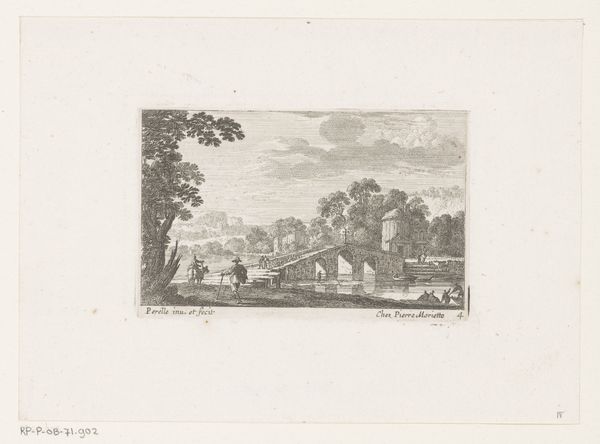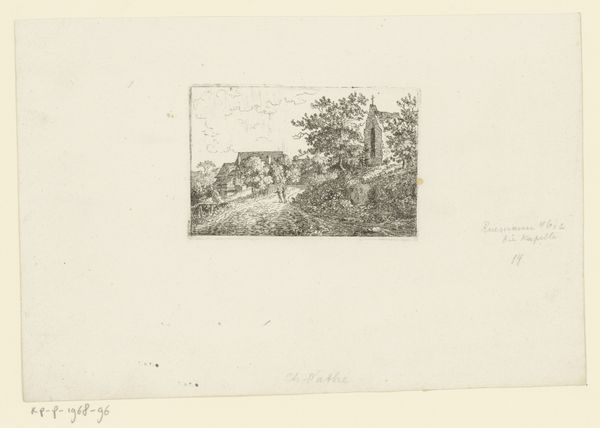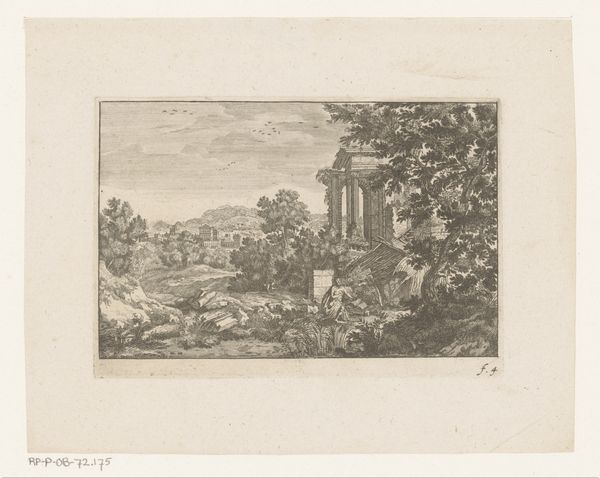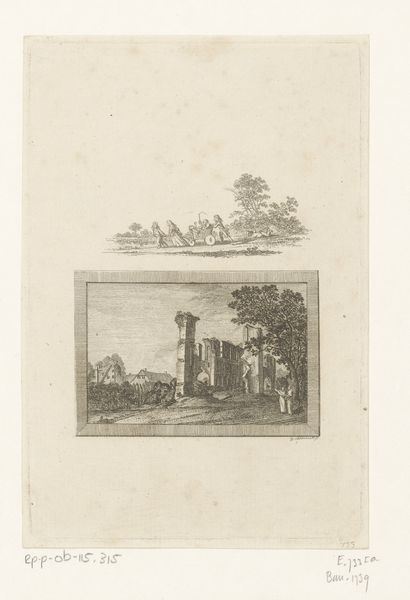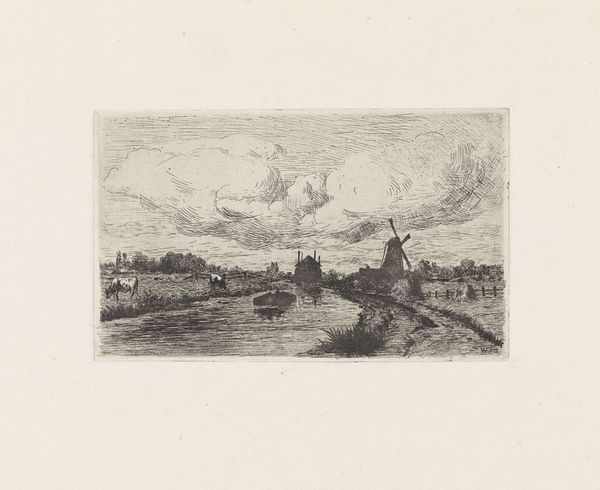
#
pencil drawn
#
amateur sketch
#
light pencil work
#
pencil sketch
#
old engraving style
#
ink drawing experimentation
#
pen-ink sketch
#
sketchbook drawing
#
pencil work
#
initial sketch
Dimensions: height 68 mm, width 122 mm
Copyright: Rijks Museum: Open Domain
Curator: Here at the Rijksmuseum, we have "View of an Ancient Bridge at Tivoli" by Israel Silvestre, created around 1643. Editor: It strikes me immediately as incredibly delicate. The fineness of the lines, the light touch... it almost feels like a fleeting memory. Curator: Silvestre was indeed known for his detailed engravings, often capturing architectural landmarks and landscapes. This piece exemplifies the era’s fascination with classical antiquity and the picturesque. We can consider how travel and artistic exploration influenced these themes. Editor: Absolutely. Tivoli itself was a popular destination, carrying immense symbolic weight. You have the bridge as a clear symbol, linking past and present. Water flowing underneath… perhaps time itself? And ruins often suggest the transience of power and the persistence of nature. Curator: Good points. The artist uses precise linework, a skill developed through formal training. We can see echoes of printmaking traditions and its evolving social role in visual representation, as printed images grew as forms of media. Editor: What I also notice is that human activity is happening among the ruins—they are inhabited with small, indistinct figures, gesturing and performing in ways we cannot ever hope to decipher. Curator: Indeed. This era saw an increasing demand for topographical views, fueled by growing urban middle classes with desires of documentation and nostalgia. Editor: And Silvestre isn't just presenting the landmark. The way the bridge curves, the details in the ruins, creates a narrative—it seems there's a reverence for these crumbling structures but also an eye to the changes coming. A very potent message. Curator: Definitely. The work's historical value allows us insight into artistic patronage and how urban narratives were molded. We could investigate how social mobility impacted these artists’ choices. Editor: Looking again, it really emphasizes the visual language of ruins as allegories—not just documents. This pushes it beyond a simple depiction of Tivoli. Curator: Yes. Art like this reveals how places shape identities, and conversely, how identities shape art itself. It also teaches us much about artistic distribution at the time. Editor: Precisely. Silvestre's work brings into relief the idea of visual symbols not only as static relics but as living components that mold culture and perception. Thank you for shedding some light on Silvestre's perspective.
Comments
No comments
Be the first to comment and join the conversation on the ultimate creative platform.
